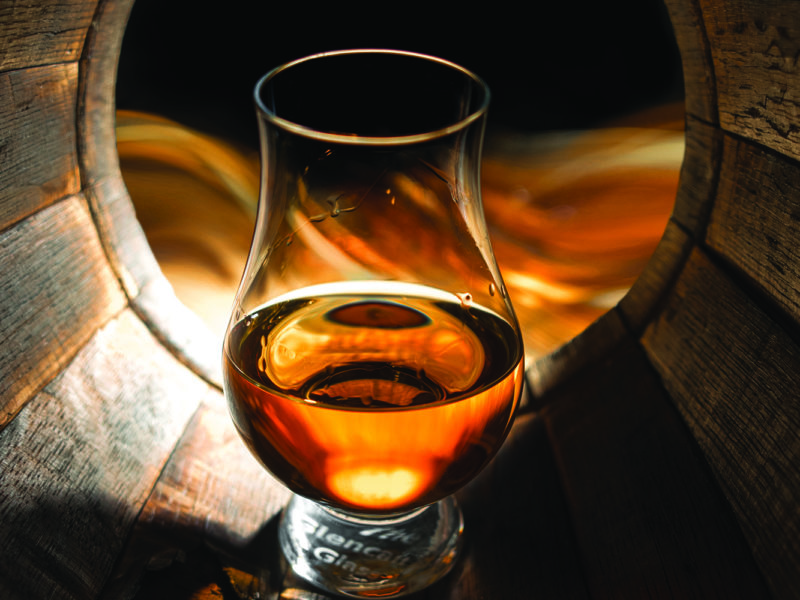
By Gary Twining
Scotch Whisky is perhaps the most distinctive spirit. It can be produced in various styles, from very subtle to intensely smoky. Tasting and experimenting will help you select a Scotch to your liking.
Scottish law defines five types of Scotch Whisky: two single spirits (products of one distillery only), and three blended products. Single Malt is distilled exclusively from malted barley, Single Grain from corn or wheat. Blended is a blend of different Single Malt or Single Grain Whiskies. Blended Malt is made from Single Malts originating from more than one distillery, while Blended Grain is blended from Single Grain Whiskies originating from more than one distillery.
All Scotch types are made with similar methods. For the prized single malts, barley is moistened to start germination, which converts the grain’s starch to sugar. Germination is halted by kiln-heating the grains, which also removes the green sprouts.
Peat, compacted vegetative growth found in marshy areas that is cut and dried for fuel, is burned in the drying process, and the grain is infused with smoke from the peat. This gives the final spirit its classic smoky overtones.
After the grain is dried and smoked, it is ground and mixed with water to make a liquid called wort to extract aromas, flavors and body. Yeast ferments the wort to a liquid known as wash. The wash is distilled twice in copper pot stills, first in the wash still (low proof) and finally in the spirit still (final proof). The distillation is kept and put into cask for a minimum of three years to concentrate, gain flavor from the wood, and mature.
Grain whisky from cereal grains (wheat or corn) are lighter and mellower than those from malted barley. These cereal grains are cooked to help convert their starch to sugar, then distilled in continuous stills, giving higher alcoholic strength and fewer flavor nuances than spirits distilled using pot stills.
Single malts and grain whisky complement each other. In the 1860s, before oak was used to mellow the spirits, blending became traditional. Grain whiskies helped soften the single malts while maintaining their richness of flavor. A blend can be made from 15 to 50 different whiskies with the goal to produce ample quantities, recognizable and consistent flavors, and a style to attract a target audience.
Style is also determined by regional differences. In general, Speyside malts are lightly peated with nutty fruit aromas. Highland malts tend toward fruitcake and oak with rich peat and elegance. The Lowlands produces softer, subtler spirits. Campbeltown malts offer toffee, smoke and fruit notes. Islay malts are intensely-peated, with smoke and saline. More diverse are the spirits of the Islands, varying from smoked peat and sea salt to citrus notes.
Producers change style by changing the component parts. Water is not the most important factor, as neighboring distilleries can produce very different styles of Scotch. The “mash bill” (blend of malt or cereal grains), the duration of smoking the green malt, the still’s size and shape and the skills and experience of the distiller are important, as are aging time and the type of wood used for the barrels. “Finishing” in barrels that previously held a different spirit or fortified wine can also offer unique flavor profiles.
Scotch can be enjoyed neat, with ice or with small amounts of water. Using a hint of filtered or spring water releases aromas and flavors. To prevent dilution, use whiskey stones or stainless-steel chill cubes. Glasses can vary from clear, tulip-shaped crystal to on-the-rocks glasses.
Experiment to find just the right Scotch style that you prefer, and how best to enjoy it!

